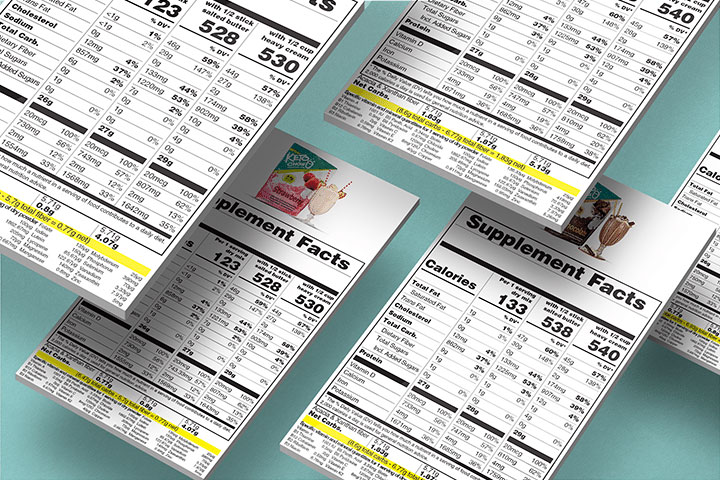If you keep up with “the buzz” in the keto community, it’s impossible to ignore the raging popularity of the protein-sparing modified fast, or PSMF. This strategy for rapid fat loss shakes things up and can be helpful for breaking stubborn fat loss stalls. Like anything else when it comes to diet “hacks” though, it isn’t appropriate for everyone. Whether or not it would be worth trying depends on your situation and what your goals are.
So let’s take a closer look at why someone might do a PSMF and who should steer clear.
What is the PSMF Diet? What is a PSMF?

We covered the basics of a PSMF in a previous article but here’s a quick refresher.
Despite what many on social media make it sound like, a true PSMF is not the same as just cutting back on fat and eating more protein (or getting a higher percentage of your calories from protein even if the total amount you’re eating is the same as before). A genuine PSMF is strict! It’s a very low-calorie diet where the bulk of your energy intake comes from lean proteins and not much else.
We can understand it a little better by looking at the name. The “protein-sparing” part comes from the fact that on a PSMF, you consume enough protein to offset any protein losses you would otherwise have during a full fast. Because you’re still consuming protein, it “spares” the loss of lean tissue you might experience if you were consuming nothing at all. (A paper from the Cleveland Clinic describes a PSMF as “a form of controlled starvation that provides just enough protein to keep the body from catabolizing its own muscle cells.”)
It’s called a “modified fast” because you get some of the benefits of fasting even though you’re still consuming food.
A true PSMF—as opposed to just eating more protein and less fat—is not nutritionally complete. It’s recommended that you take a multivitamin/mineral supplement and some variations also call for fish oil supplements to ensure you get adequate essential fatty acids.
The PSMF was originally developed in the 1970s as a medical intervention for people with severe obesity and health problems that might be caused or exacerbated by the excess weight. For weight loss among the general public, use of a PSMF—or what people are calling a PSMF—is pretty new except for maybe among professional fitness competitors.
Get a free PSMF e-book
Looking to jumpstart your weight loss but are unsure what recipes to use? Check out our free PSMF e-book.
Why do it?

That’s easy: rapid fat loss!
Outside of it being prescribed as medical therapy, people typically become interested in a PSMF because they want to lose weight quickly. A PSMF may be especially alluring to people who’ve been stuck in long-term stalls or plateaus on keto diets. When you’ve been working hard for a while and “doing everything right” but stubborn pounds still won’t budge, it’s perfectly logical that you would consider shaking things up with a PSMF.
Some people also opt to implement it to lose weight specifically for the purpose of qualifying for certain kinds of medical procedures (e.g. bariatric surgery or a joint replacement).
The thing to know is, you don’t have to do a PSMF to get things moving again. This ultra-strict approach is a good way to jumpstart things, but in my experience as a nutritionist working with clients, it’s rare that people have to be quite that extreme. When someone’s fat loss has been stuck for a while, there are typically two main culprits that get in the way: too many carbs and too much fat.
You might be used to hearing that keto is a “high-fat diet,” but the truth is that it’s very, very low-carb. What makes a diet “ketogenic” is keeping your carb intake very low. So you can see now why if you’re struggling with fat loss on keto, the first step to getting unstuck is to make sure your carb intake is truly low.
Carb Intake

Well-known keto authority Dr. Eric Westman, my co-author on the book End Your Carb Confusion, advises his patients to count total carbs rather than net carbs. When you count net carbs, you subtract carbohydrate grams that come from fiber and sugar alcohols, so that gives you wiggle room for things like keto ice cream, coconut flour brownies, and almond flour cookies.
Some people can include these sorts of things in their diet and do just fine, but others don’t get the fat loss results they want until they cut these out.
In assessing your diet, if you decide that your carb intake really, truly is low and you’re still not losing fat, then you might be eating too much fat. Remember, the “metabolic magic” that happens on keto comes from eating very little carbohydrate, not from eating a lot of fat.
When you count total carbs and there’s no room left for those keto treats, you don’t just eliminate the extra carbs—you also stop eating the cream cheese, heavy cream, coconut butter, and other concentrated fats they’re typically made with.
Most people break fat loss stalls by moving the needle in those two directions: fewer carbs and slightly less fat. They don’t have to do a full-on PSMF where nearly all added fats are prohibited and the emphasis is on lean proteins only. If you realize that you’ve been overdoing added fats and oils, or that your carb intake hasn’t been quite as low as you thought it was, start there.
Get back to what Dr. Westman calls “evidence-based keto,” as opposed to the distorted ultra-high-fat, low-protein “internet keto” you see on social media.
Thyroid Function

If you’re convinced your keto diet is on-point but excess pounds still aren’t moving, another thing to look into is thyroid function. Low thyroid hormones are under-diagnosed, and even when they are identified, the treatment is often not effective.
If you’re living with signs and symptoms that are known to be associated with low thyroid, ask your doctor for a comprehensive thyroid panel. It’s important to insist on the comprehensive panel because the limited tests doctors typically order if you ask for a “thyroid test” are often not adequate for identifying a problem.
And if you’re already taking thyroid medicine but you still have a lot of bothersome symptoms—including stubborn weight loss even on a strict keto diet—then ask about exploring a different type or different dose of medication. The most commonly prescribed thyroid medicine leaves many people with unresolved issues that get better when they try a different form.
Who should do a PSMF?

A PSMF isn’t generally intended for people who want to shed just a few pounds. Medical experts recommended a PSMF for people with at least 40 pounds to lose or those who weigh 130% or more of their ideal body weight. That being said, if you do it safely, this approach can be used to “jumpstart” fat loss and give you rapid results. Seeing quick progress can give you a mental boost if you’ve been feeling frustrated by extremely slow loss on keto.
It’s a way to prove to yourself that you can lose weight.
It is important to note, however, that PSMF is not intended as a long-term way of eating. So if you have quick success with it, you probably just need to tighten up your diet from what you were doing before. You might not have to be as strict as a true PSMF; now you know your sweet spot for fat loss is somewhere in between: fewer carbs and less fat than you were eating before, but a bit more generous with fat and calories than you were permitted on a PSMF.
As boring as it sounds, you really do have to find a way of eating that’s realistic and sustainable for the long term. It’s understandable to want to drop a few pounds quickly for a special occasion, but what a disappointment it would be to regain it all and be right back to where you were before. And most people who lose on a PSMF do regain the weight if they don’t have a good plan for transitioning back to a more liberal diet.
Who shouldn’t do the PSMF diet?

As we noted in a past article, the PSMF is not appropriate for everyone. If you have a history of eating disorders or feel you are prone to developing disordered thinking about eating, it’s best to steer clear of a PSMF. This approach is also not recommended for people under age 16 or over age 65 without medical supervision. Many medical conditions and circumstances also contraindicate a PSMF, in particular compromised heart or kidney function, pregnancy, and breastfeeding.
Bottom line: if in doubt, work with your doctor!
You need to be especially careful in undertaking a PSMF if you take medication for diabetes or high blood pressure. Your medicine might need to be adjusted during a PSMF, or even before you start, in preparation for the changes that would be expected. Rapid fat loss is an understandable goal, but make sure you do it safely.
Get a head start on the PSMF diet

If you’re unsure how to get started on meal prepping for the PSMF diet, you can check out our free PSMF e-book. It’s full of delicious and easy recipes created by influencer Maria Emmerich.
























